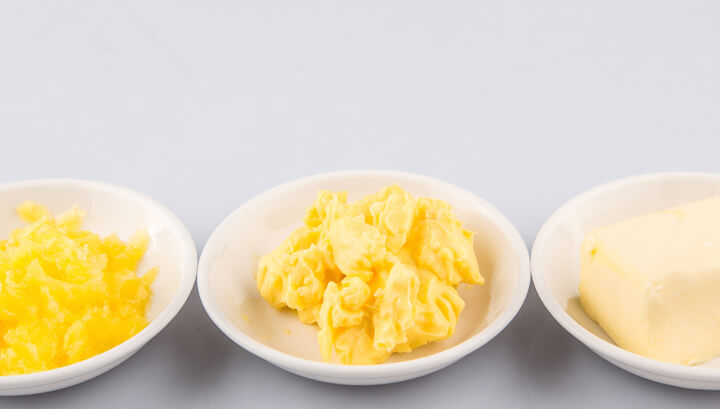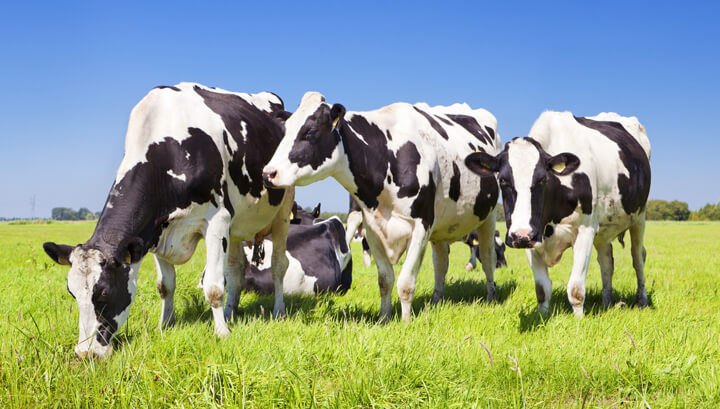
Ghee. You may have heard people ostentatiously discussing its merits in your local Whole Foods store, or perhaps seen it scrawled across the pages of various alternative health or paleo-style blogs. Until now, you’ve brushed it aside as just another fad, but it just keeps coming back into your life again and again… perhaps it’s time to find out what the heck it actually is?
Simply put, ghee is clarified butter. The origins of ghee can be traced back to Indian cuisine, where it is used to add a rich, unique flavor to curries and fry-ups. Ghee is made by slowly simmering then straining butter, a process which removes the milk proteins, sugars and water. The result is a cooking oil substitute which has an amazingly sweet, slightly smoky flavor and which lasts a whole lot longer than regular butter. While ghee may have been born in India, it’s quickly taking the Western world by storm.
Now that you know what ghee is, you’re probably wondering what all the fuss is about (aside from it’s delicious flavor, of course). Keep reading to find out all the wonderful cooking and health benefits it provides, along with a number of ways to use it.
Smoke point
If you’ve read our comprehensive guide to cooking oils, you’re probably well-versed with the importance of knowing a cooking oil’s smoke point. The smoke point of an oil or fat is the temperature at which it begins to produce smoke when heat is applied. When this temperature is reached, the fat or oil begins to break down and form a nasty compound called acrolein. Acrolein is found in cigarette smoke and a range of other unsavory things, and can significantly increase your risk of developing cancer. For this reason, you really want to avoid pushing an oil past its smoke point.
While butter has one of the lowest smoke points out of all the cooking oils/fats, ghee has the second highest smoke point, clocking in at an impressive 480 degrees Fahrenheit. This means you can use ghee for a wide range of cooking applications, including high-heat cooking such as frying and grilling, without having to worry too much about breathing in any carcinogenic compounds. This makes it one of the best cooking oils available.
Ghee is also a saturated fat, which makes it really stable and unlikely to break down under heat. It is also relatively resistant to oxidation, the process by which an oil becomes rancid.
Lactose and casein intolerance

Because the process of clarifying the butter removes the sugars and milk proteins from the butter, ghee is a much safer dairy alternative for those who are intolerant to casein or lactose. Considering the symptoms of either of these allergies can result in anything from swelling, hives, congestion, bloating, nausea, vomiting, and cramps, this is definitely a big thumbs-up for ghee!
Fat-soluble vitamins
Butter is a personal favorite of mine for cooking, not only because it makes anything it touches taste amazing, but also because it’s one of the most nutrient-dense foods on the planet. While butter is usually safe for most people, it isn’t always, meaning those who have the above-mentioned intolerances would typically steer clear of it. This means they’re missing out on all those nutrients, however.
The beauty of ghee is that it contains all of the nutrient power of butter, but without the risk of an adverse reaction to other dairy products. Like butter, ghee contains large amounts of fat-soluble vitamins, including vitamins A, D and E. Vitamin A plays an important role in maintaining good vision, healthy bones, supple skin and strong immunity. Vitamin D is essential for bone health and neurological function, and vitamin E helps to repair damaged skin, balance hormones and balance cholesterol.
In addition to this vitamin trifecta of awesomeness is vitamin K2. Despite its importance, many people are lacking in this vitamin, setting them up for a greater risk of gastrointestinal bleeding, heavy menstrual bleeding, blood in the urine and easier bruising. Along with dark leafy greens, ghee is one of the best sources for this essential nutrient. Making ghee a regular part of your diet, therefore, is a positive move for your health.
Conjugated linoleic acid (CLA)

Better known as CLA, ghee which is sourced from grass-fed cows has an impressive concentration of this acid. CLA has a wide range of health benefits, including the reduction of tumors and cancers of the breast, colon, lung, skin and stomach, alleviation of asthma, reduction in blood pressure, lowering cholesterol and osteoporosis prevention. Studies also suggest that an increase in CLA is associated with lowered risk of cardiovascular disease.
Grass-fed ghee contains more than three times the amount of CLA than grain-fed ghee, so it’s important to know your sources.
Butyrate
Ghee contains significant amounts of butyrate, a short-chain fatty acid which acts as a detoxifier, improves insulin sensitivity, reduces the symptoms of IBS, supports a healthy colon and even fights against Crohn’s disease. Not only that, it is thought that the butyric acid in ghee can improve digestion by stimulating conversion of fiber and helping to break down fats and toxins.
How to use ghee
Ghee is an amazingly versatile cooking oil, and can be used for sautéing, roasting, stir-frying, grilling or any method which requires high-heat cooking. That doesn’t mean you should only use it for high-heat applications, however. I find it makes an excellent addition to soups and stews, makes an amazingly flavorful medium to fry my pastured eggs in at breakfast, and can even be used in certain baking recipes. Just keep in mind that it becomes solid below room temperature, so if you’re planning on using it all up within a few weeks, it’s easier to store it in a warmish spot outside of the refrigerator.
|
Easy DIY Ghee Recipe
|
| Prep Time: |
| 15minutes |
| Cook Time: |
| 30minutes |
| Total time: |
- 1lb grass-fed unsalted butter
- Medium stainless steel or cast iron skillet
- Cheesecloth
- Mesh skimmer
- Mesh strainer
- Medium mason jar
- Place one pound of grass-fed butter into a stainless steel or cast iron skillet, and melt over low heat. As the butter melts, slowly and constantly stir with a spoon to prevent from burning.
- Continue to simmer the butter on low heat for 20 to 30 minutes, stirring regularly. As foam forms on top of the butter, gently skim it off with the mesh skimmer and discard. You will notice the milk fats begin to settle at the bottom of the skillet and start to brown, an important step which gives ghee it’s characteristic nutty flavor.
- Continue to skim the foam from the butter until you notice the solids at the bottom of the pan have turned a deep golden brown. Once this stage is reached, quickly remove from heat to prevent the solids from burning.
- Once the mixture has cooled to room temperature, position the mesh strainer in the mouth of the jar, line with cheesecloth and pour the mixture into the jar. The amazing golden liquid in the jar is your new homemade ghee…enjoy!
— Liivi Hess
Find out why grass-fed butter (and ghee) is one of the healthiest things you’ll ever eat!

